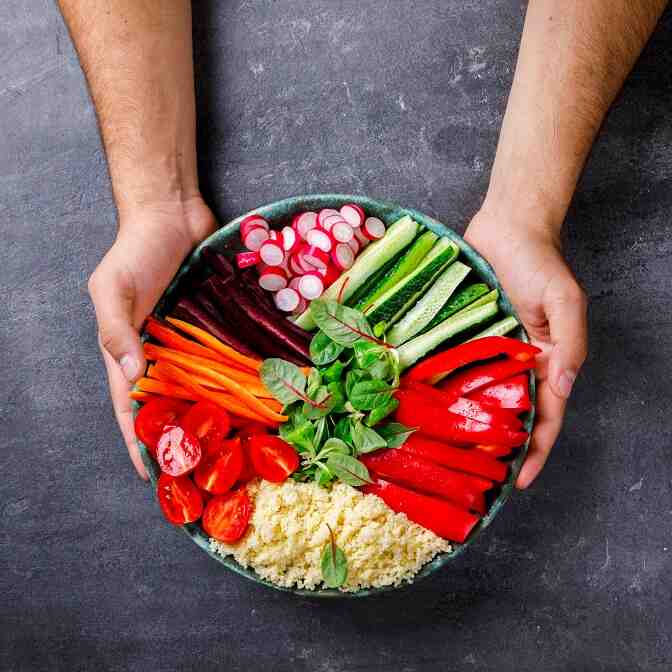Craving Control: How to Stop Sugar Addiction
Sugar is an essential part of many people’s diets, providing energy and flavor to a variety of foods. However, for some, sugar becomes more than just a simple food ingredient—it becomes an addiction. The constant cravings for sugary treats, the inability to stop eating once you’ve had a taste, and the negative effects on both physical and mental health are all signs of sugar addiction. But the good news is that with the right approach, it’s entirely possible to break free from this cycle and regain control over your health.
In this article, we’ll explore the science behind sugar addiction, the reasons why sugar can be so difficult to quit, and provide actionable steps to help you curb your sugar cravings and break the cycle. Whether you’re looking to improve your diet, boost your energy levels, or achieve better overall health, understanding how to control sugar cravings is the first step toward reclaiming your well-being.
1. Understanding Sugar Addiction
Sugar addiction isn’t just a matter of liking sweet foods. Research has shown that sugar can trigger the release of dopamine, a neurotransmitter in the brain that is responsible for feelings of pleasure and reward. This response is similar to the way drugs or alcohol affect the brain, which is why it can be so difficult to stop craving sugar. The more sugar you consume, the more your brain becomes conditioned to crave it, creating a cycle of dependency.
There are two main types of sugar that contribute to this addiction:
- Refined sugars: Found in processed foods, soft drinks, and candy, these sugars are quickly absorbed by the body, causing a rapid spike in blood sugar levels. This can lead to a short burst of energy followed by a crash, prompting further cravings for sugar to regain that energy.
- Natural sugars: Found in fruits and some vegetables, these sugars are typically absorbed more slowly due to the fiber content in these foods. While they are healthier than refined sugars, excessive consumption of natural sugars can also contribute to sugar addiction.
Understanding how sugar affects your brain and body is key to breaking free from addiction. The next step is to take actionable steps to reduce sugar consumption.
2. Why Sugar is So Addictive
Several factors contribute to the addictive nature of sugar, including:
- Emotional triggers: Many people turn to sugar as a way to cope with stress, sadness, or boredom. This emotional connection to sugar can make it difficult to resist cravings, as the brain associates sugary foods with comfort and reward.
- Blood sugar fluctuations: Consuming large amounts of sugar leads to rapid spikes and crashes in blood sugar levels. This creates a cycle where you crave more sugar to regain that energy, leading to more crashes and cravings. Over time, this can make it harder to maintain stable blood sugar levels without the help of sugar.
- Hormonal imbalances: When you consume sugar, your body releases insulin to regulate blood sugar levels. Chronic sugar consumption can lead to insulin resistance, which can make it more difficult for your body to regulate blood sugar, resulting in even more cravings for sugar.
- Gut microbiome: Research has shown that the gut microbiome—the collection of bacteria in your digestive system—can play a role in sugar cravings. Certain types of bacteria thrive on sugar, and when you consume sugary foods, these bacteria flourish, sending signals to your brain to continue eating sugar.
3. Steps to Stop Sugar Addiction
Breaking free from sugar addiction requires a multi-faceted approach that includes both dietary and behavioral changes. Here are several effective strategies to help you control your sugar cravings:
1. Gradually Reduce Sugar Intake
Cutting sugar out of your diet cold turkey can be overwhelming and unsustainable. Instead, try to gradually reduce your sugar intake over time. Start by eliminating obvious sources of sugar, such as sugary drinks, candy, and baked goods. Once you’ve reduced these, begin cutting back on hidden sugars in processed foods. Read food labels carefully and be mindful of terms like “high fructose corn syrup,” “sucrose,” and “glucose,” which are all forms of sugar.
By gradually reducing sugar, you give your body and brain time to adjust, making it easier to break the cycle of cravings.
2. Increase Protein and Fiber Intake
One of the best ways to curb sugar cravings is by eating foods that keep you full and satisfied. Protein and fiber-rich foods can help regulate blood sugar levels and reduce the likelihood of cravings. Incorporate lean proteins (such as chicken, fish, and legumes) and fiber-rich foods (like whole grains, vegetables, and fruits) into your meals. These foods take longer to digest, keeping you feeling full for longer periods and stabilizing blood sugar levels.
3. Avoid Processed and Refined Foods
Processed and refined foods are often packed with hidden sugars and unhealthy fats, which can fuel sugar addiction. Try to focus on whole, unprocessed foods, such as fresh fruits and vegetables, lean meats, and whole grains. Cooking at home allows you to control what goes into your meals, reducing the likelihood of consuming hidden sugars.
4. Get Enough Sleep
Lack of sleep can lead to increased sugar cravings. When you’re tired, your body craves quick sources of energy, often in the form of sugary snacks. Aim for 7-9 hours of quality sleep each night to help regulate your hormones and reduce the temptation to reach for sugary foods. If you struggle with sleep, consider developing a bedtime routine, limiting screen time before bed, and creating a calm sleep environment.
5. Manage Stress
Stress is one of the biggest emotional triggers for sugar cravings. When you’re stressed, your body releases cortisol, a hormone that can increase hunger and cravings for high-sugar foods. To manage stress, try incorporating relaxation techniques such as deep breathing, yoga, meditation, or even regular physical activity. Exercise is a great way to reduce stress while boosting your mood and energy levels, making it easier to resist sugar cravings.
6. Stay Hydrated
Sometimes, sugar cravings are actually a sign of dehydration. When your body is thirsty, it can send signals that are mistaken for hunger or cravings. Drinking plenty of water throughout the day can help keep these false hunger signals at bay. Aim to drink at least 8 glasses of water a day, and consider adding a splash of lemon or cucumber for flavor if plain water feels boring.
7. Find Healthy Alternatives
When you do crave something sweet, try to choose healthier alternatives. Fresh fruit is a great way to satisfy a sweet tooth while also providing vitamins and fiber. You can also experiment with sugar substitutes like stevia or monk fruit, which can add sweetness to your food without the negative effects of refined sugar. Just be cautious of over-consuming sugar substitutes, as they can sometimes trigger cravings as well.
8. Seek Support
Breaking free from sugar addiction can be challenging, and having support from others can make the process easier. Whether it’s a friend, family member, or online support group, having someone to share your struggles and victories with can keep you motivated and accountable. You don’t have to go through this journey alone.
4. The Benefits of Cutting Sugar
By reducing your sugar intake, you’ll begin to notice several positive changes in your health:
- Improved energy levels: Without the constant blood sugar crashes, you’ll experience more stable energy throughout the day.
- Better mood: Sugar consumption is linked to mood swings and irritability. Reducing sugar can lead to more consistent, balanced emotions.
- Weight loss: Cutting out sugar can help you reduce calorie intake, leading to weight loss and better overall health.
- Healthier skin: Sugar can contribute to acne and other skin issues. Reducing sugar intake can lead to clearer, healthier skin.
- Reduced risk of chronic diseases: Lowering sugar intake can help reduce the risk of conditions like heart disease, type 2 diabetes, and fatty liver disease.
Conclusion
Sugar addiction is a real and challenging issue, but it’s possible to regain control and break free from the cravings. By understanding the science behind sugar addiction and implementing practical strategies such as gradually reducing sugar intake, increasing protein and fiber, managing stress, and finding healthier alternatives, you can start to take control of your health and well-being. Remember, the key to success is consistency and patience. As you work toward cutting back on sugar, you’ll not only improve your physical health but also develop a more balanced and positive relationship with food.






